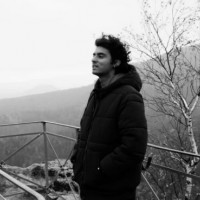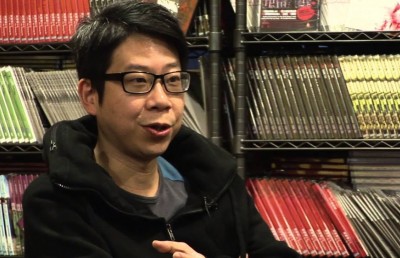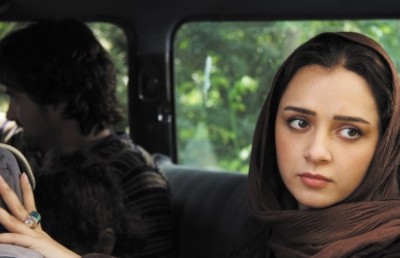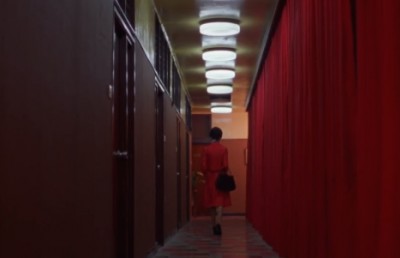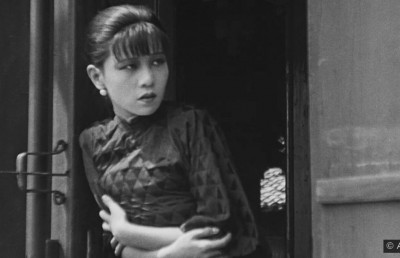Birha (Ekta Mittal, 2018): Cinema of Ellipses
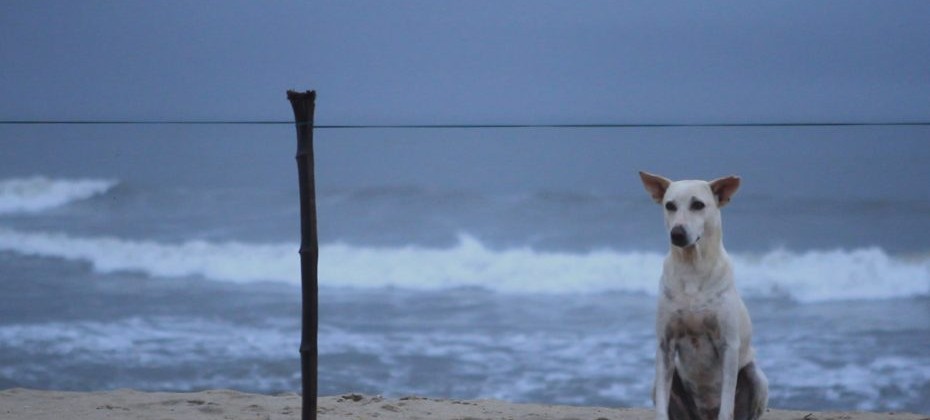
As the end credits roll, we are told that Birha (aka Absence, Ekta Mittal, 2018) borrows the essence and metaphors of Shiv Kumar Batalvi’s poems. Batalvi was a Punjabi poet best remembered for his sublime and rich imagery. In his poem “Gumnaam Din” [Missing Days], he writes:
I have seen this in the journey of silence
that silence sings
silence cries, silence wails,
and silence speaks a beautiful language. 1
मैं चुप्प दे सफ़र विच इह वेख्या
कि चुप्प गाउंदी है
चुप्प रोंदी है, चुप्प कराउंदी है
ते चुप्प नूं बहुत सोहणी
ज़बान आउंदी है ।
It is this wail of silence that is ever-present in Birha. The word itself roughly corresponds to the lamentation, the pain, and the grief caused by separation. This is reflected in the film’s formal structure as well – it is itself an act of searching, of waiting endlessly, and finally coming to terms with the befuddling silence of loss. Birha underscores a phenomenology of migration, a meditation on what exactly constitutes the unpredictable act of separation, of situations in which acting in the interests of hope and faith persistently puts one in a close encounter with the reality of suffering, loss, and death.
Birha stands in sharp contrast to the overarching media narrative that is content with either treating migrant workers as representatives of abject human suffering, and therefore deserving of utmost sympathy, or as symptomatic of degradation at the extreme fringes of “civilized” society. Such a myopic view fails to acknowledge that migration patterns are also determined by people’s access to resources, the environment (institutional, market, policy), intra-household relations, and wider social relations, and not just the exploitative demand for labour. 2 In thinking so, there is a gross generalization of sorts, and individual and distinctive aspects are subsumed under convenient narratives.
In that respect, Birha has a thematic affinity with a triad of short films co-directed by Ekta Mittal and Yashaswini Raghunandan between 2011-14, as part of a project called “Behind the Tin Sheets.” This project revolved around migrant workers employed to construct the new Metro in the city of Bangalore, thus serving as a rumination on the changing landscape of a city and those who enact the changes.
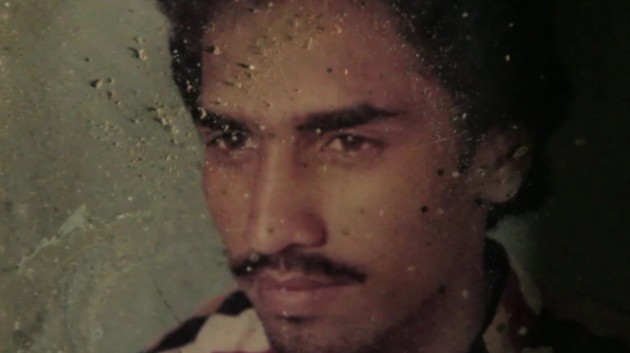
Presence (2012) focuses on stories about ghosts and spirits lurking around the construction site and their tin sheet settlements (situated far away from the city), shedding light on the workers’ fears and anxieties. One woman remarks that ghosts are everywhere, just like God. A man describes in striking detail how he and his friend stumbled upon a witch. Another worker remarks that they themselves are ghosts. These voiceover narrations are set against images that signify the fragility of their livelihood. Development looms large over their figures: glitzy buildings, crowded marketplaces, busy highways . . .
Similarly, in Distance (2014), the workers narrate stories of love, desire, and longing, set against their everyday routines. A young man racks his brains over how a person could fall in love with a pauper like him, then remarks that the fortuitous event happened when she chanced upon his writings in his diary. A woman joyously declaims that she loves everything about her husband, the way he walks, his involuntary tics, even his itching habit. A young boy remarks that his favorite Bollywood film is Jeet, 3 because some parts of the story remind him of his life.
What is evident here, as well as in Birha, is the deliberate displacement from their identity as workers, a move away from essentialist representations. 4 To be sure, the precarity of their condition is laid bare by the visuals, but is at the same time undercut by the stories narrated through voiceovers. There is compassion in the depiction, but an absence of any attempt at sentimentality. They are not just victims of systemic marginalization, but also lovers, thinkers, poets, and consumers of culture, labels that are rarely attached to them. Conversely, marginalization isn’t wholly restricted to the socio-economic sphere; it is also equally libidinal and intellectual.
Birha is firmly situated within the Slow Cinema/Contemporary Contemplative Cinema genre, with its emphasis on long takes, lack of a narrative, predilection for atmosphere and imagery, and presence of non-actors. However, there is a crucial point where Birha differs from most Contemplative films. The latter generally show an affinity for a unified experience, through the use of techniques endemic to such cinema (hence the term contemplative). The outcome of such an experience is usually tranquil, even if dealing with a grim subject matter.
Birha, on the other hand, revels in its disjointed structure. The point is not so much to give rise to a unificatory experience as it is to decenter the viewer, to constantly unspool the assumptions viewers make about the film (and cinema in general). It is also difficult to pin Birha down into any one category; it is as much a documentary as it is a fictional re-enactment, as much an ethnographic study of lived experiences as it is an “experimental” work with surrealist flashes of sound and image.
Birha starts with darkness and a clap of thunder. Slowly, images swivel in and out of existence. We see a photo of a turbaned Sikh with a gaunt expression on his face. A black-and-white photo of his childhood. A phone number is tried but turns out to be not reachable.
Throughout the film, photographs are presented to us in such a manner that they appear more real than the people in them. One is reminded of Barthes’ ingenious remark: “Now, in the Photograph, what I posit is not only the absence of the object; it is also, by one and the same movement, on equal terms, the fact that this object has indeed existed and that it has been there where I see it. The Photograph then becomes a bizarre medium, a new form of hallucination: false on the level of perception, true on the level of time: a temporal hallucination, so to speak, a modest shared hallucination (on the one hand ‘it is not there,’ on the other ‘but it has indeed been’): a mad image, chafed by reality.” 5
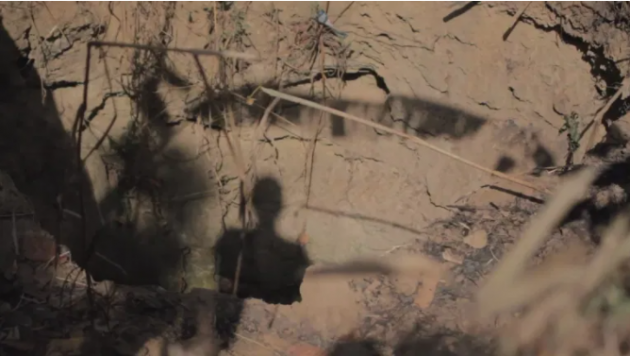
The grainy photographs in Birha are indeed chafed by reality, entirely severed from their referents. They act as free-floating signifiers in the film; what they signify remains absent, always out of reach. We hear the sound of a door open as light falls on a faded photograph. It is a young man in profile – long aquiline nose, perky moustache, sideburns, unwavering mystery in his eyes. We see a receipt from Bawa Cloth House and a dusty trunk, as a woman in voiceover wonders whether he is even alive. Past and present commingle; ordinary objects acquire newfound significance, suffused with rueful absence. We see another timeworn photo of a young woman. Relics of a bygone past, recovered from the vanishing vaults of memory. What reveals itself to us is a sense of irretrievable loss.
The seeds of Birha grew out of Ekta’s strong relationships with the workers while making “Tin Sheets,” and a later desire to explore the roots of their journey, thus prompting her to travel to far-flung villages. Indeed, Birha frequently jumps between Ekta’s search for the workers and a fictionalized re-enacting (or rather re-imagining) of the lives that they lead in the cities. In voiceover, a man tells us that he hardly used to sleep at home and preferred frequenting jungles, graveyards, or mosques. The urban images are quite striking: a traffic intersection with car headlights providing occasional flashes of illumination, half-built Metro bridges brazenly looming over and dwarfing a solitary figure, deserted marketplaces with waste strewn everywhere. Later, we see adjacent tunnels; a solitary man sits by the side as vehicles zoom by.
These are places of transit and transaction, alienating aspects of a neoliberal city that prides itself on material development, where no authentic human connection is possible. 6 In a later scene, a man lies splayed out on his bed in a spare, dimly-lit room, exhausted beyond measure, while a robot toy dances on its own to a catchy tune, alternately blinking red, green, blue, and white, a garish display of the power of commodities. Paradoxically, it is only in these homogeneous non-places that anyone can feel secure in their anonymity.
In the absence of a causal plot, faces, bodies, and gestures become our primary means of approaching the narrative. Not just the faded faces in photographs, but also the people Ekta encounters on her journey – shy, nonplussed, expectant, excited, weary faces, faces buried in shadows. We see a young girl dancing sensually through rapid, disorienting cuts. The image is swathed in red, a symbol of unattainable sexual desire. There’s an extreme close-up of her lips and nose; a tiny mole peeks out, seemingly containing the key to the proportional mysteries of the face. The cavernous wrinkles on the forehead of an old woman begin to resemble the dough being prepared. A woman dresses up before a mirror, an expectant expression on her face. Towards the end, she is seen removing her earrings and bangles. The moon surreally stands by, taking up one side of the frame, a silent witness to her actions.
What remains is the impenetrability of these faces. Faces in Birha represent the impossibility of their own representation. The face simply presents itself, and demands justice. 7 Too often than not, regimenting subjectivities into a standardized block (historically true and politically expedient as they may be) misses utterly the specificity of a face-to-face encounter, the unguarded openness and vulnerability of such a confrontation. Characters in the film often appear silhouetted, either framed from the back or in profile. We see them in long shots or caught in the ubiquitous play of light and shadow. When we finally confront a face, it has a consecratory impact.
Bodily gestures play an equally important role. We see an old woman’s knuckles kneading dough, a cot being carried around, chai being made, sipped, people gazing absently out a window, a repetitive to-and-fro of a woman as she walks through an alleyway carrying a can of milk, a pair of slippers, and finally books. Corporeality overshadows meaning; we encounter the sensuous plasticity of body-presences rather than psychological prototypes. Memory becomes embodied in the senses. Waiting takes place not just in the mind, but in and through the body, which in its worst moments serves as a reminder of a commitment to exist, to carry on. In Birha, this burden mostly falls on the left-behind women, cursed to bear the desolation of waiting.
It also forms part of the inbuilt “excess” of the film, along with certain other images that deviate from narrative exigency: an abandoned slipper, lotuses on a lake, a train of ants, and gossamer like spider webs. These elements of excess challenge our conventional reading of the film. They signify without themselves being significant, thus adding to its atmospheric mood.
Birha, along with countless other films that opt for a poetic approach, has been charged with propagating an elitism of sorts, of pandering to the cinematic intelligentsia. Such a critique betrays a hidden assumption, namely that mainstream realist films, those that closely correspond to our experience of reality, are more privileged in their explications of socio-political mores than other approaches. The ambiguous moral position of realism is well established. The very representation of reality through the act of making a film (inception, narrative, framing, lighting, focus, depth, editing) is already tantamount to artificial tampering with it. Mimetic reproduction is always imbued with subjectivity.
The current crop of content-driven cinema largely adheres to the convention, ideology, and aesthetics of popular realism 8 – psychologically motivated acting, novelistic drama, spatio-temporal continuity, persistent pacing and plotting, conflict, and a denouement (or the possibility of one). In such a scenario, content acquires center stage while form is relegated to the background. This conventional approach inevitably comes with an ideological baggage in the form of the traditional role of Hollywood film in capitalist society (genealogically, one can go further back to Renaissance models of convergence and perspective).
Such films take into account our presence as a spectator, and to a certain extent, anticipate our responses to it, thus providing an imaginary enjoyment, either in the form of emotional closure or narrative denouement. It lulls the viewer into a false sense of complacency, since the right questions have been raised, the pertinent images shown, and answers provided for (or the possibility of providing one been broached). No active speculation is needed; the film has already done the thinking for the viewer. Moreover, in our contemporary image-saturated late capitalist culture, an image (or a panoply of images) exists only to be replaced by the next. What is in the frame is already more immediate than what is outside it. The argument of granting privileged neutrality or objectivity to reality as recorded by mechanical means (applied to both fiction and documentary) turns out to be just another illusion. 9 It is as much dependent on our participation in it as we are on it. Birha ’s poetic attitude in this way also serves as a critique of the conventional documentary, where what one has to descriptively say about one’s lived experiences is supposedly enough to get the idea across.
Perhaps the only time Birha approaches a conventional documentary aesthetic is during an interview conducted with a woman as she’s preparing a meal (the same person whom we saw in Distance, who had expressed her love for her husband’s antics). It’s harrowing to see how much has changed over the years. The enthusiasm has all but disappeared; what remains is fiery pessimism. With a steely look in her eyes, she quips that she now has the ability to tolerate all kinds of pain. She’s afraid of the times, not men (a film with Bollywood superstar Amitabh Bachchan plays on TV). Later, while kneading dough, she recites a poem:
Listen, this is my story
My own people robbed me, strangers never had the guts
My boat sank, where there was hardly any water.
In spite of that, I am standing like a flower in the water,
And blossoming.
Everyone desires me, I can see 10
Yahi ek kahani hai, mera
ki mujhe apno ne loota, gaero mei kya dum tha,
jaha meri kishti doobi waha paani kam tha,
toh fir bhi hum gulaab ke phool paani mei khade hai banke,
khilkhila rahe hai,
har koi humko chah raha hai,
dikh raha hai . . .
In a startling sequence, she looks directly at the interviewer, a touch of pride in her eyes, and says, “But you can’t tolerate pain. You will tear apart like a cucumber. I won’t.” It’s a trenchant comment on the unbridgeable distance between observer and observed.
Nevertheless, Birha, along with several other “poetic” films, does espouse a realism of sorts – not the mimetic or psychological realism of popular literature or cinema, but rather the brute ontological realism of the film image, its presentational power of the plenitude of lived reality. What matters is the immanent force with which the image intrudes into our experience and becomes part of our filmic memory. Paradoxically, it is this very move away from realism that makes Birha appear more Real than reality itself.
Birha is above all an affective work of art. Its primary concern is to be able to evoke, through an atmospheric interplay of sound and imagery, certain states of being (always active, in flux) that are prior to prefigured emotional categories. One can never really pinpoint an exact emotion or feeling. The experience disarmingly washes over us, such that conceptual categories can only be retroactively posited. As Ekta explains in an interview, “I wanted the viewer to stay with the mood and emotion and to traverse through the feeling of this fictional village, kind of another space, another universe, where all these people are residing and they have a connectedness, but their ways of experiencing separation are quite different.” 11
In Birha, as in dreams, we do not approach things; they show themselves to us. Time and space no longer have the totalizing quality that they do in our daily lives. Both are malleable, open to jumps and skips. A forest fades into the mist, which in turn reveals the ocean. The sighing of the trees, the abandoned spaces of houses, the cadences of rain, the murmuring of the ocean sweep one beyond the things that one directly sees, hears, or thinks. There is a liminality to the landscapes, a constitutive absence that defies categorization. What we are able to see is precisely what is not shown; it triggers a mnemonic process that can only be felt.
Reality and fiction are ever porous, constantly merging with one another. In a haunting sequence, a man recounts a myth about a forest ghost that possesses women (a counterpart to cities that possess men), about a woman who had died while holding an umbrella. As we hear the voiceover, the forest suddenly takes on a ghostly appearance, suffused with eerie menace. The presence of spaces throughout Birha is charged with subjectivity. This self-reflexive intrusion of fantasy (dreams, desires, fears) is what makes them appear as reality.
It’s mostly due to visual and sonic brilliance that Birha is able to conjure up different modes of experientiality. Its non-diegetic sounds are what connect the disparate moods together. They are almost tactile in the way they affect the viewing experience. By dissociating sound and image, Mittal turns their non-synchronism into a language of continuous discovery. There is an expressionism at work in both sound and image: shadows that seem to sway of their own accord, the moon as an object within arm’s reach, a lugubrious chamber choir that intrudes into the hyper-real sound design (cicadas chirping, a loudspeaker ad for a Bajaj motorcycle, azaans, gurbaani, sounds of everyday life). The result being that the interpretive ground beneath our feet vanishes, and we sway freely from one experience to the next.
This affective dimension, however, is not to be confused with apolitical fantasy. Our world is shaped not simply by narratives and arguments but also by nonlinguistic effects – by mood, atmosphere, and feelings that arise by way of the socio-political situations around us (watching Birha becomes an especially poignant experience after the Covid-19 lockdown debacle). It is the latter idea that Mittal is keen on exploring.
Towards the end, a man named Surinder Meenj introduces himself and informs us of his disappearance: “I was last seen in Bangalore in 2012 and have been missing ever since.” A photo is shown, and a mobile number given. He would be extremely grateful if someone found him. It is as much a flight of desperate optimism on Mittal’s part as it is an indictment of the complacent viewer.
Birha ’s affective thrusts reach their zenith in one of the most disquieting dialectical shifts in recent cinema. Towards the end, we are shown a forest shrouded in liminal mist. Faint hums of a religious gurbani can be heard on the soundtrack. A barely visible shadow moves through the mist and evanescent trees. Up to this point, one has a fairly good idea of what has transpired. The journey to find the workers and the fictionalized re-enactments serve as loose anchoring points for the narrative thread. The shadow turns out to be a woman dressed in black, clutching something close to her chest. The mist hangs in the air like a tangible entity. As the woman walks by, we cut to a dog peering at something outside the frame. Soon, more and more dogs appear. Their numbers multiply with each cut. The woman walks through dense undergrowth. Meanwhile, the gurbani slowly segues into an eerie mix of sounds – howling wind, cicadas, wails, the barking of dogs. The woman approaches two freshly dug graves, kneels down, and places two photographs – of a man and a woman – in each of the two. The barking becomes manically ferocious. We cut back to a vicious pack of dogs. On the right side of the frame rests a large animal carcass. It’s a sudden visual intrusion that has a stomach-knotting impact.
The woman lights a diya, a few strands of her hair dangling in and out of the frame. We cut back to the dogs. The barking is now chaotic. A mountain of skeletal remains is revealed. The soundtrack becomes suffused with wails; in a dark room with green walls, two women clasp each other tightly and cry with all their might. A dog rips the meat off a carcass. We see skeletons turned brown with rot. Hundreds and hundreds of them. We see decaying meat, fibrous bony threads, craniums. The sequence immediately gives way to images of a religious gathering, as if unable to bear the traumatic encounter. The soundtrack becomes more and more fragmentary.
Thunder and the pattering of rain take over again, and we cut to a dusty x-ray image. Raindrops reveal it to be a pair of lungs. The image lingers on, imprinted in our very being. The tactile visuality evokes a visceral dread; one feels one’s lungs fill up as the x-ray sheet is splattered with rain. It is a sequence that distils with utmost clarity our absurd position as self-conscious beings.
There’s a sharp plunge from a rumination on lived realities to an almost mechanistic cynicism – death as the most certain possibility of life. We see the stuff that we are made of and to which we will eventually be reduced, perhaps one of the key aspects of the metaphysical evocation of birha. The lung x-ray evokes terror, and perhaps shameful loathing. Mortality, normally hidden from our everyday pondering, assumes a rigidly nauseous form; we come face to face with the abject. 12 It is a hallucinatory sequence replete with primal associations.
The hypnotic tracking shot at the end serves as a climactic finale of sorts to this sharp plummeting into despair, almost alluringly despondent in its resigned closure. We start at the meeting point of land and water, wave after wave caressing the sand, the cloudy sky towering over them, a sublime image, as the camera languorously tracks away from the water and towards a barely visible road, a lone tree propped up on its side, and on and on it tracks, towards a boy on a cycle who suddenly lurches by, moments later swallowed up by the mist, the ever present mist that skirts over a field and suddenly reveals the ghostlike ruins of an abandoned building, its red facade feebly jutting out, only as real as we want it to be, as real as the dog that gallops across a field, the harbinger of mortality, and yet on and on we plod, a slow inexorable movement that resembles the numinous physicality of a dream, until we are back amongst the trees, amongst magisterial trunks that rise into the sky, wisp-like branches that crisscross and contain unspeakable mysteries, on and on until we finally come to rest on a solitary cloth hanging on a clothesline. The image fades out.
One feels the collapsing weight of years gone by in a matter of minutes. It’s a fitting end to a staggering journey.
In contemporary psychoanalytic theory, the positing of a rigid distinction between the conscious and unconscious, the latter being a nebulous place of repression and trauma, would be considered anachronistic. Instead, we are on the track of the unconscious only in the rupture between the two, in the irreducible space between the manifest and the latent.
Correspondingly, in Birha, it is in and through the irreducible space between two images, the denuded omissions, that the film constructs itself. What is in the frame is wholly self-contained, but is at the same time transformed by what is outside it. This constitutive space not only discloses the material conditions of its production (thus breaking open the illusion of film being a readymade object of consumption), but also manages to subvert the interpellating fantasy of cinema. 13 Its political value lies in the fact that it allows spectators to look at themselves from the perspective of a void – a complete lack of identification with any particular element of cinema – thus freeing them from all symbolic constraints and ingrained assumptions. 14
A radical cinema of ellipses.
This publication and all the content transmitted with it are intended solely for the use of the individual or entity to whom it is addressed. No part of this publication may be reproduced, stored and/or transmitted in any other form or by any other means without my prior written consent.
© Vedant Srinivas – February 2021
Notes
- The full text of the English translation can be found in Baradwaj Rangan, Fil Companion (February 22, 2020): https://www.filmcompanion.in/film-festivals/berlin-film-festival/the-ekta-mittal-interview-missing-migrant-workers-shiv-kumar-batalvis-poetry-and-the-many-textures-of-separation/ The English translation was presumably made by Ekta Mittal herself, although Jasdeep Singh and Sangeet Toor have been credited as involved in the “translation of selected poems of Batalvi” in the end credits. ↩
- Priya Deshingkar and Daniel Start. Seasonal Migration for Livelihoods in India: Coping, Accumulation and Exclusion. As per India’s 2017 Economic Survey, internal migration accounts for 100 million people in India, nearly one-fifth of India’s labour force. ↩
- Jeet (Raj Kanwar, 1996) is an action thriller about a professional killer involved in a love triangle. ↩
- “I was looking at the idea of the emancipated worker, where the question is always of crossing the borders of the impossible. Because what was ironically possible was the improvement of the conditions of work and wages, but it was not enough. What they wanted was to become entirely human, with all the possibilities of a human being and not only having what is possible to do for workers. So that there is not necessarily an opposition between material improvement, and this attempt.” Jacques Ranciere, during an interview conducted in Delhi, on the occasion of the release of the Hindi language edition of The Nights of Labour (a work that examined the philosophical and poetical writings of worker autodidacts in 19th century France). ↩
- Roland Barthes. Camera Lucida: Reflections on Photography, 115. ↩
- In his groundbreaking work, Non-Places: Introduction to an Anthropology of Supermodernity (1992), Marc Augé distinguishes between “places” – places of identity, of traditional relations and history, places that can be imbued with meaning and authentic connections – and “non-places” – places that impose a certain kind of anonymity and homogeneity (somewhat similar to Pascal Augé’s concept of any-space-whatever). Airport lounges, motorways, malls, hotel rooms, markets could all be classified as non-places. Of course, these definitions are strictly contextual. Marc Augé writes: “Anthropological place is formed by individual identities, through complicities of language, local references, the unformulated rules of living know-how; non places creates the shared identity of passengers, customers, or Sunday drivers.” “The space of non-place creates neither singular identity nor relations; only solitude, and similitude.” (101) ↩
- Emmanuel Levinas, Totality and Infinity: An Essay on Exteriority, 295. To put it simply, only in the face-to-face encounter, insists Levinas, do we experience human otherness in its true alterity, which in turn gives rise to ethical obligation. As Levinas writes: “The face is signification, and signification without context. I mean that the Other, in the rectitude of his face, is not a character within a context. Ordinarily one is a ‘character,’ a professor at the Sorbonne, a Supreme Court justice, son of so-and-so, everything that is in one’s passport, the manner of dressing, or presenting oneself. And all signification in the usual sense of the term is relative to such a context: the meaning of something is in its relation to another thing. Here, to the contrary, the face is meaning all by itself. You are you. In this sense, one can say that the face is not ‘seen,’ it is what cannot become content, which your thought would embrace; it is uncontainable, it leads you beyond.” Levinas, Ethics and Infinity, 86. ↩
- Pierre Bourdieu, The Field of Cultural Production, 218: “Minimum, and apparently immediate comprehension, accessible to the simplest observers and enabling them to recognize a house or a tree, still presupposes partial (unconscious) agreement between artist and beholder concerning categories that define the representation of the real that a historic society holds to be ‘realistic’.” Bourdieu emphasizes the fact that reality is never perceptible except through socially conditioned forms of apprehension. ↩
- One is reminded of Maurice Pialat’s remark, “What I mean by realism goes beyond reality.” Even a filmmaker duo as fanatically materialist as Jean-Marie Straub and Danièle Huillet reject conventional realism for a hyper-stylized version of it. Closer to home, Amrit Gangar recalls an interview where he asked Mani Kaul how he could reconcile Robert Bresson and Ritwik Ghatak and their two contrasting worldviews. His answer: “They both equally cured me of a sickness called ‘realism’.” ↩
- The poem is recited by a character in the film whose name appears as Pooja in the credits, and was most probably written or conceived by her. Ekta Mittal and Abhro Baneerjee are the ones responsible for the English subtitles. ↩
- Naomi Keenan O’Shea, “Interview: Ekta Mittal.” Film Comment (February 7, 2019): https://www.filmcomment.com/blog/interview-ekta-mittal/ ↩
- Julia Kristeva, Powers of Horror: An Essay on Abjection, 3. The abject, according to Kristeva, refers to the visceral human reaction to a threatened breakdown in meaning caused by the loss of the distinction between subject and object/self and other. The abject can be the abject body deemed impure (excrement, hair, pus, corpse), or social situations and activities that are considered polluting, or associated with what destabilises our sense of certainty (whether existential or social). As she writes: “In the presence of signified death—a flat encephalogram, for instance—I would understand, react, or accept. No, as in true theater, without makeup or masks, refuse and corpses show me what I permanently thrust aside in order to live. These body fluids, this defilement, this shit are what life withstands, hardly and with difficulty, on the part of death. There, I am at the border of my condition as a living being. My body extricates itself, as being alive, from that border. Such wastes drop so that I might live, until, from loss to loss, nothing remains in me and my entire body falls beyond the limit—cadere, cadaver. If dung signifies the other side of the border, the place where I am not and which permits me to be, the corpse, the most sickening of wastes, is a border that has encroached upon everything. It is no longer I who expel, ‘I’ is expelled. The border has become an object.” ↩
- Interpellation is an Althusserian term that involves concrete individuals mis-recognizing themselves as subjects by taking up a socially given identity. In Critical Theory, fantasy is an imaginary scenario that fills in the gaps within ideology. Fantasy transforms the dissatisfied subject of desire into a subject satisfied with an imaginary enjoyment. Though the subject still may not obtain the lost object of desire in the fantasy, the subject can imagine obtaining it as a possibility (through cinema), and thus happily accepts his subjugation. ↩
- Todd McGowan, The Real Gaze: Film Theory after Lacan, 15: “When cinema lulls the subject into its dreamy, fantasmatic netherworld, it may insert the subject into ideology, but it also may open up the possibility of an encounter with the traumatic Real that disrupts the power of ideology.” ↩

